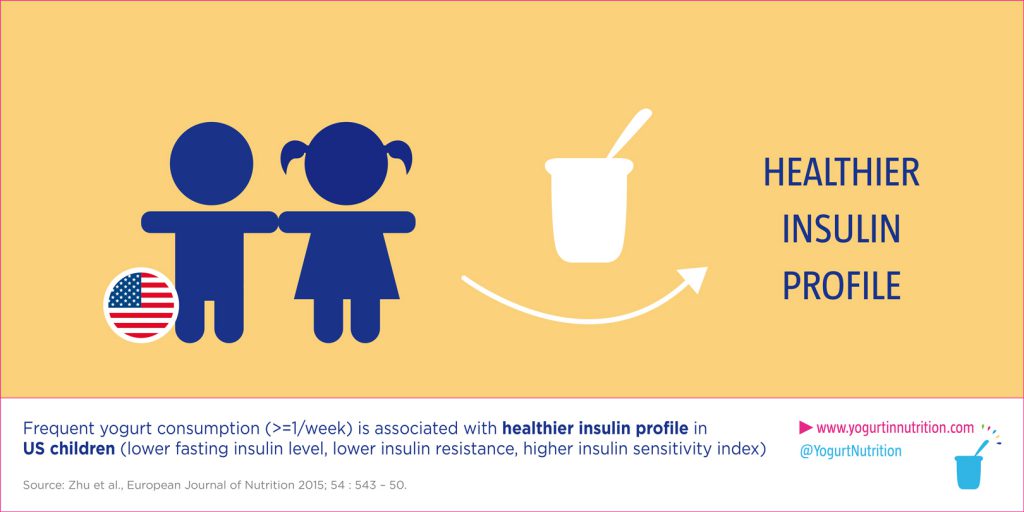If yogurt may be associated with a better nutrition intake of micronutrients, recent studies show also that it may have a role in the overall diet quality and even the quality of life among children and adolescents.
Assessing health effects of yogurt for US children

Most recent studies show a beneficial association between yogurt consumption with diet quality and metabolic profile in adults. Data in children are rarer. A US study, based on NHANES data analyzed the diet quality and metabolic profile 5,124 children, aged 2–18 years, in a time lapse of 3 years, and shows that children, who eat yogurt frequently (at least once per week), had a better diet quality.
Frequent yogurt consumers also had a better metabolic profiles, with a lower fasting insulin level, less insulin resistance and a better insulin sensitivity. The authors didn’t find any association between yogurt consumption and body weight or blood pressure in this study, but this will require further investigations.
Are dairy products a marker of quality of life?
Health-related quality of life (QOL) is a key aspect of physical, social, and mental well-being. Australian researchers followed 1.216 participants up over 5 years, from age 12 to 17. Dairy consumption was assessed in 858 participants from a food frequency questionnaire and Health-related QOL was assessed by a validated 23-item questionnaire for children aged 2 to 18 years. If nonsignificant associations were observed among girls, with total dairy intake and milk and cheese consumption, the situation is different among adolescent boys. The highest consumption of yogurt, from age 12 to 17, conducted to a higher overall quality and mental well-being score. Since the study was observational, a causal nature can’t be established and these findings require therefore further confirmation and clarification, but are quite promising.
To go further:
- Find here the valuable reasons why yogurt is a great snack for children
- Yogurt can improve health in children
Sources:
- Wu et al., Public Health Nutrition 2011; 15:75–81
- Gopinath et al., Journal of American College of Nutrition 2016; 35: 522-558.
- Zhu Y et al. European Journal of Nutrition, June 2015, Volume 54, Issue 4, pp 543-550.



